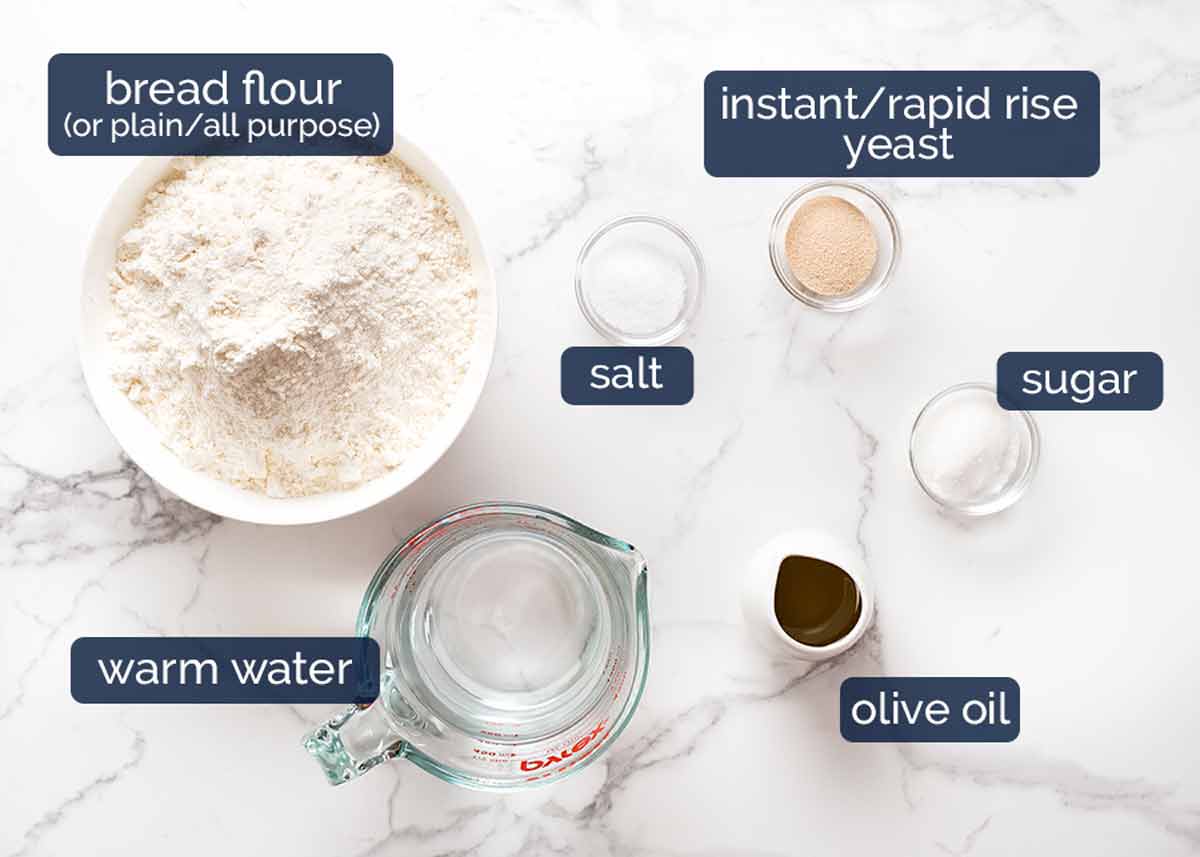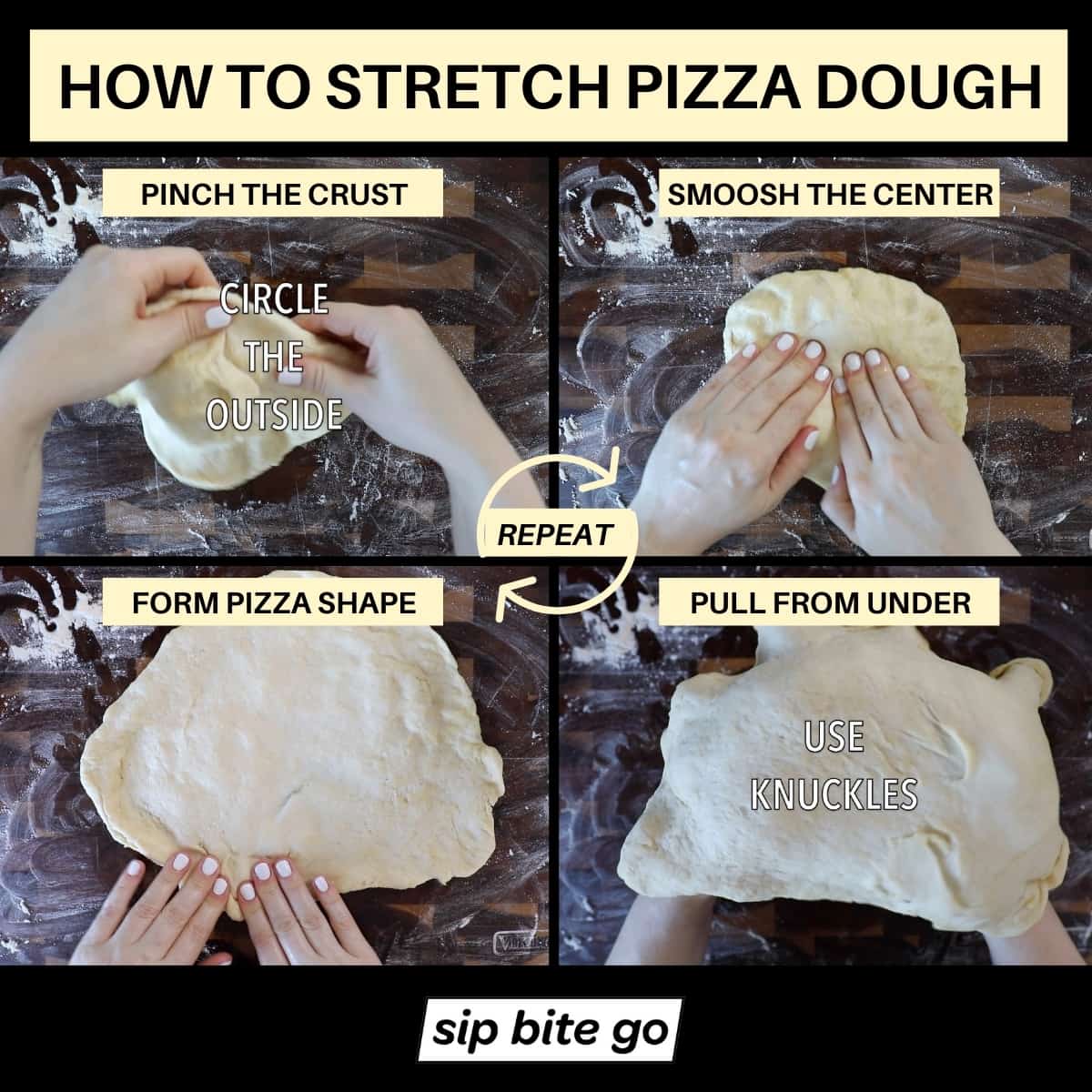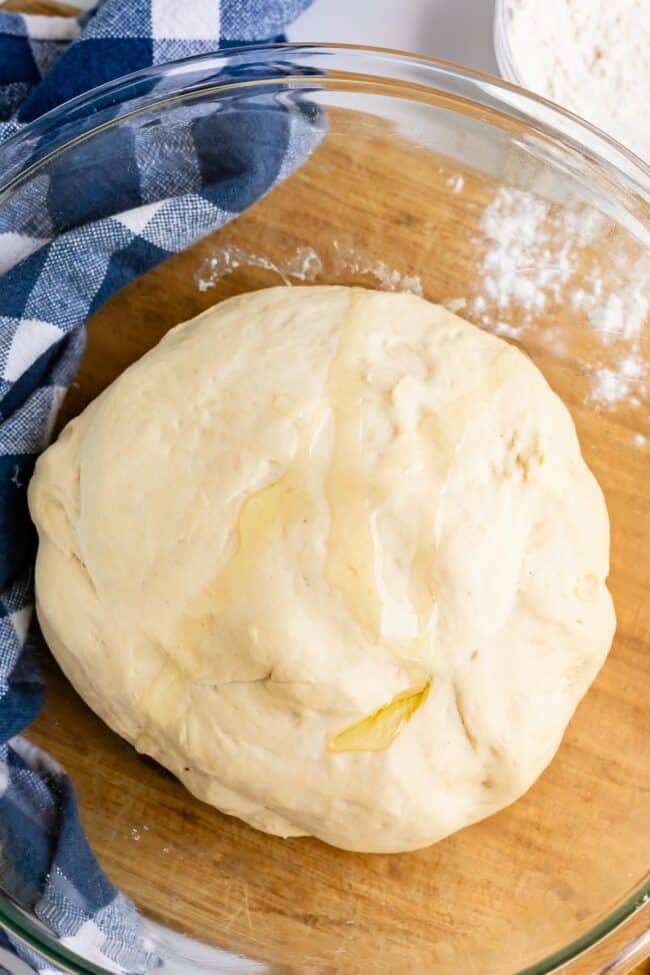How to Make Homemade Pizza Dough: A Step-by-Step Guide

:max\_bytes(150000):strip\_icc()/homemade-pizza-dough-FT-RECIPE0422-7d3aa2fbd4244e88afaff987753866d6.jpg)
Choosing the Right Ingredients
Flour options for pizza dough
When making homemade pizza dough, it's essential to choose the right flour. Opt for high-protein flours like bread flour or Tipo 00 flour, as these will give your dough a chewy texture and nice rise. If you prefer a lighter, crispier crust, you can use all-purpose flour. Experiment with different flours to find the texture and flavor that suits your taste.
Yeast and its role in pizza dough
Yeast is a key ingredient in pizza dough as it helps the dough rise and gives it a light, airy texture. Active dry yeast and instant yeast are the most common types used. Active dry yeast needs to be activated in warm water before adding it to the dough, while instant yeast can be added directly to the dry ingredients. Follow the instructions on the yeast packaging for the best results.
Selecting the best oil and salt for your dough
Adding oil and salt to your pizza dough enhances the flavor and texture. Olive oil is a popular choice as it adds a rich, savory taste. Vegetable oil or canola oil can also be used. When it comes to salt, kosher salt or sea salt works well. Avoid using table salt, as it may make the dough too salty. Add the oil and salt to the dough during the mixing process to distribute the flavors evenly.
Remember, making homemade pizza dough is about experimentation and finding the combination of ingredients that suits your preferences. Don't be afraid to try different flours, yeasts, oils, and salts until you achieve the perfect homemade pizza dough that satisfies your cravings.

The Pizza Dough Recipe
So you want to make your own homemade pizza dough? Well, you've come to the right place! Making pizza dough from scratch may seem intimidating, but with a little bit of time and effort, you can create a delicious base for your favorite toppings. Here's a step-by-step guide to help you through the process.
Step-by-step instructions for making homemade pizza dough
- Gather your ingredients: You'll need flour, water, yeast, olive oil, salt, and sugar.
- Mix the dry ingredients: In a large bowl, whisk together the flour, salt, and sugar.
- Activate the yeast: In a separate bowl, mix the yeast with warm water and let it sit for a few minutes until frothy.
- Combine the wet and dry ingredients: Gradually pour the yeast mixture and olive oil into the bowl with the dry ingredients. Use a wooden spoon or your hands to mix until a dough forms.
- Knead the dough: Transfer the dough to a lightly floured surface and knead it for about 5-7 minutes, until it becomes smooth and elastic.
- Proof the dough: Place the dough in a greased bowl, cover it with a clean kitchen towel, and let it rise for about 1-2 hours, or until it doubles in size.
Mixing and kneading the dough
During the mixing and kneading process, the gluten in the flour develops, giving the dough its structure and texture. It's important to knead the dough until it becomes smooth and elastic, as this will result in a lighter and more airy crust.
Proofing the dough for optimal flavor and texture
Proofing allows the dough to rise and develop flavor. The longer you let it proof, the more complex the taste will be. When proofing, make sure the dough is in a warm, draft-free area to create the ideal environment for yeast activity.
Now that you have your homemade pizza dough ready, you can roll it out, add your favorite toppings, and bake it to perfection. Enjoy your delicious homemade pizza!

Tips for Perfect Pizza Dough
Proper resting and rising times
To achieve the perfect homemade pizza dough, it's crucial to give it enough time to rest and rise. After kneading the dough, let it rest for at least 1-2 hours at room temperature. This allows the gluten to relax, making the dough easier to work with and giving it a better texture. After resting, punch down the dough and let it rise for another 1-2 hours. The rising time will depend on the room temperature, but a good rule of thumb is to double the dough's size before using it.
Achieving the ideal crust thickness
The thickness of your pizza crust is a matter of personal preference. For a thin crust, roll the dough out thinly using a rolling pin or stretch it with your hands. For a thicker crust, let the dough rise for a longer time or use more dough when shaping the pizza. Experiment with different thicknesses until you find the one that suits your taste.
Working with whole wheat or gluten-free dough alternatives
If you prefer a healthier option or have dietary restrictions, you can make homemade pizza dough using whole wheat flour or gluten-free alternatives. When using whole wheat flour, be mindful that it absorbs more liquid, so you may need to add a little more water to the dough. For gluten-free dough, use a blend of gluten-free flours and add xanthan gum or a binding agent to help improve texture and elasticity.
Remember, practice makes perfect when it comes to making homemade pizza dough. Don't be discouraged if your first attempts are not as gooey and delicious as you imagined. With these tips and a little bit of patience, you'll be creating mouthwatering pizzas with the perfect crust in no time.

Shaping and Stretching the Dough
When it comes to making homemade pizza, shaping and stretching the dough can be a bit intimidating. But fear not! With a few simple techniques, you'll be able to create that perfect pizza crust in no time.
Methods for shaping and stretching pizza dough
There are a few different methods you can use to shape and stretch your pizza dough. Here are a couple of the most common ones:
-
The Hand Toss: This is the classic technique you often see in pizzerias. Hold the dough on your knuckles, gently toss it in the air, and catch it with your other hand. Repeat this process a few times until the dough is stretched to your desired size.
-
The Rolling Pin: If you prefer a more controlled approach, you can use a rolling pin to shape your dough. Start by lightly flouring a flat surface and roll the dough out from the center, working your way outwards until it reaches the desired thickness.
Creating a classic round pizza shape
To achieve that traditional round shape, start by stretching the dough with your hands. Place your hands in the center of the dough and gently stretch it outwards, being careful not to tear the dough. Rotate the dough as you go to ensure it stretches evenly. Continue this process until you reach your desired size and shape.
Tips for achieving a thin and crispy crust or a thick and chewy crust
If you prefer a thin and crispy crust, make sure to roll the dough as thin as possible. Preheat your oven and baking surface, such as a pizza stone or baking sheet, to a high temperature. This will help to quickly cook the dough and create that crisp texture.
For a thicker and chewier crust, allow the dough to rise for a longer period of time. This will give the yeast more time to work, resulting in a fluffier and more substantial crust. Additionally, you can brush the edges of the crust with olive oil before baking to achieve a golden and slightly crispy outer layer.
With these techniques and tips, you'll be able to shape and stretch homemade pizza dough like a pro. So get creative with your toppings and enjoy the delicious results!

Baking the Pizza
Preheating your oven for pizza baking
To get that perfect, crispy crust, it's important to preheat your oven to a high temperature. Set the temperature to at least 475 degrees Fahrenheit (245 degrees Celsius) and give it enough time to reach that heat. This is crucial for even and efficient cooking of your homemade pizza.
Choosing the right baking surface (pizza stone, baking sheet, or pizza peel)
The type of baking surface you use can greatly affect the final result of your pizza. Here are your options:
-
Pizza Stone: If you want that authentic, restaurant-style crust, a pizza stone is your best bet. Place it in the oven while preheating so it gets nice and hot. Then, transfer your formed pizza dough onto the hot stone for even heat distribution and a crispy crust.
-
Baking Sheet: A baking sheet is a convenient option if you don't have a pizza stone. Place your pizza dough directly on the sheet, and it will still achieve a delicious result.
-
Pizza Peel: A pizza peel is a flat, wooden surface used to transfer the assembled pizza onto a hot baking surface, such as a stone or a baking sheet. It allows you to easily slide the pizza onto the surface without disturbing the toppings.
Cooking time and temperature for perfect pizza results
The cooking time and temperature may vary depending on your oven, but as a general guideline, bake your pizza for about 10-15 minutes at the preheated temperature. Keep a close eye on it to prevent burning. The crust should be golden brown and the cheese bubbly and melted.
Remember, practice makes perfect, so don't be discouraged if your first attempt isn't perfect. With a little time and experimentation, you'll be baking delicious homemade pizza in no time!

Topping and Finishing the Pizza
So you've successfully made your homemade pizza dough, and now it's time to add the finishing touches that will take your pizza to the next level.
Classic pizza sauce recipes
To start, you'll need a delicious sauce to spread over your dough. Classic pizza sauces can be as simple or as complex as you like, but here are a few tried and tested recipes to get you started:
- Traditional Tomato Sauce: Made with canned tomatoes, garlic, onions, and a blend of Italian herbs, this sauce is a classic favorite.
- Pesto Sauce: If you're looking for a fresh and vibrant flavor, pesto sauce made with basil, pine nuts, garlic, Parmesan cheese, and olive oil is a great option.
- White Sauce: For something different, try a white sauce made with garlic, butter, flour, and milk. It adds a creamy and rich flavor to your pizza.
Choosing the right cheese and toppings for your pizza
Now it's time to get creative with your choice of cheese and toppings. Mozzarella cheese is a popular choice for pizza, but feel free to experiment with other types like cheddar, provolone, or even goat cheese for a unique flavor profile. As for toppings, the sky's the limit! From classic pepperoni and mushrooms to gourmet options like arugula and prosciutto, choose ingredients that complement each other and suit your taste.
Adding final touches like fresh herbs or drizzled olive oil
To add that finishing touch to your pizza, consider garnishing it with fresh herbs like basil, oregano, or parsley. These will enhance the flavors and give your pizza a fresh and vibrant appearance. You can also drizzle a little bit of olive oil over the top for added richness and flavor.
Remember, making homemade pizza is all about customization and personalization, so don't be afraid to get creative and experiment with different flavors and toppings. Enjoy!

Conclusion
Now that you have learned how to make homemade pizza dough, you can enjoy the satisfaction of creating your own delicious pizzas right in the comfort of your own home. Remember to follow the steps carefully and give yourself enough time for the dough to rise. Experiment with different toppings and flavors to create your own signature pizzas. With a little practice, you'll become a master pizza maker in no time!
Frequently Asked Questions
Q: Can I freeze the pizza dough?
A: Yes, you can freeze the pizza dough for later use. After the dough has risen, divide it into individual portions and wrap each one tightly in plastic wrap. Place the wrapped dough portions in a freezer bag and freeze. When you're ready to use the dough, simply thaw it in the refrigerator overnight and proceed with shaping and baking.
Q: How long can I store the pizza dough in the refrigerator?
A: You can keep the pizza dough in the refrigerator for up to 3 days. After the dough has risen, transfer it to a container with a lid or cover it tightly with plastic wrap. Make sure to punch down the dough before refrigerating to prevent overproofing.
Q: Can I use whole wheat flour instead of all-purpose flour?A: Yes, you can substitute whole wheat flour for all or part of the all-purpose flour in the recipe. Keep in mind that whole wheat flour absorbs more liquid, so you may need to adjust the amount of water accordingly. The resulting crust will have a nuttier flavor and a slightly denser texture.
Q: Can I use a stand mixer or a food processor to knead the dough?A: Yes, you can use a stand mixer fitted with a dough hook or a food processor with a dough blade to knead the dough. Simply add the ingredients to the mixing bowl or food processor and mix until a smooth and elastic dough forms. This method can save you time and effort in kneading by hand.
Whether you're a pizza lover or simply want to try your hand at homemade cooking, making your own pizza dough is a fun and rewarding experience. So gather your ingredients, roll up your sleeves, and get ready to enjoy the wonderful world of homemade pizza!



